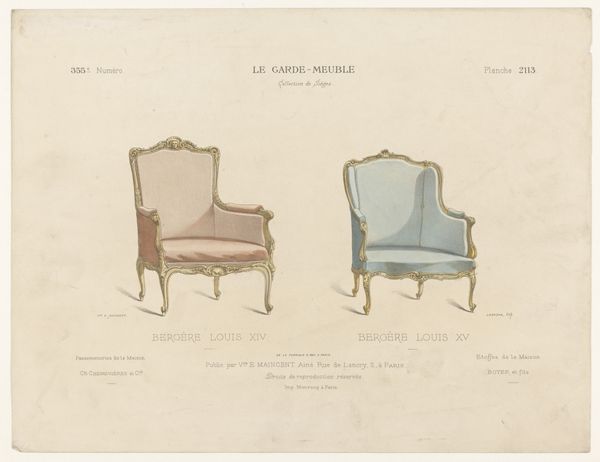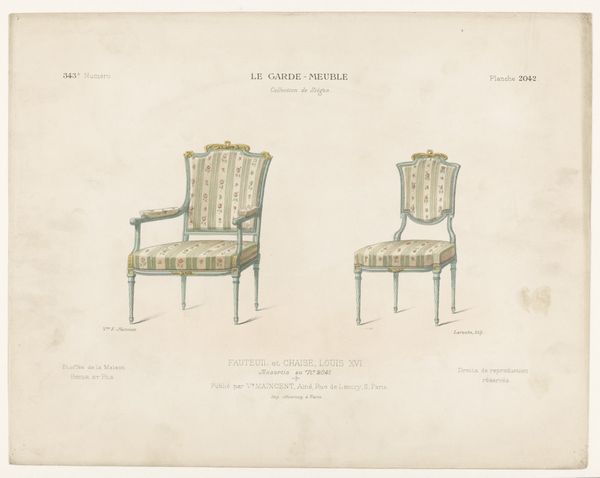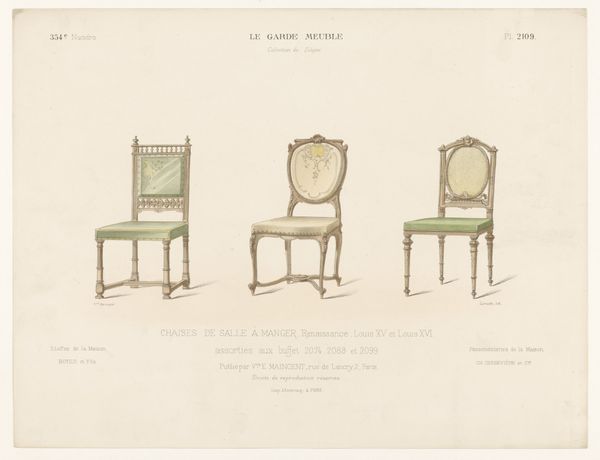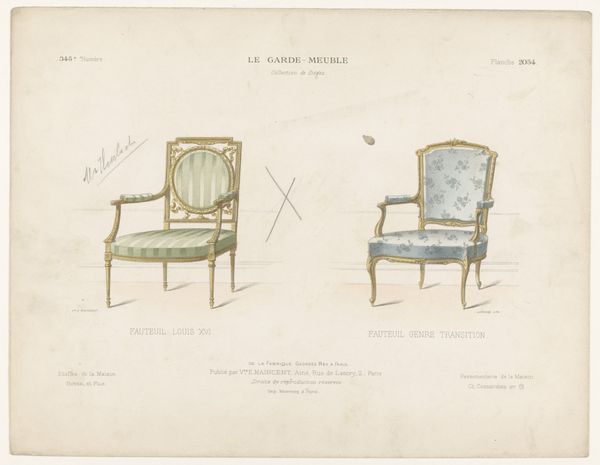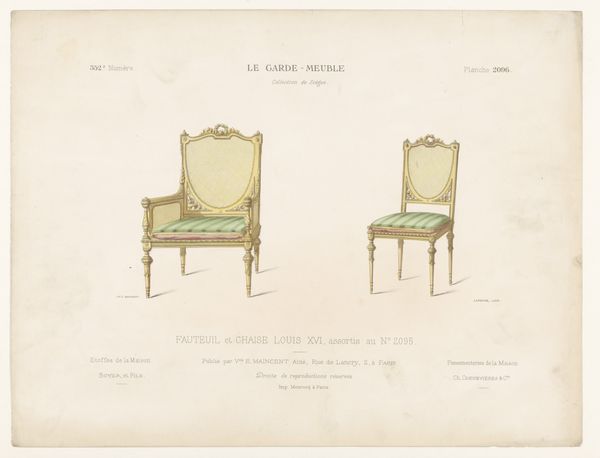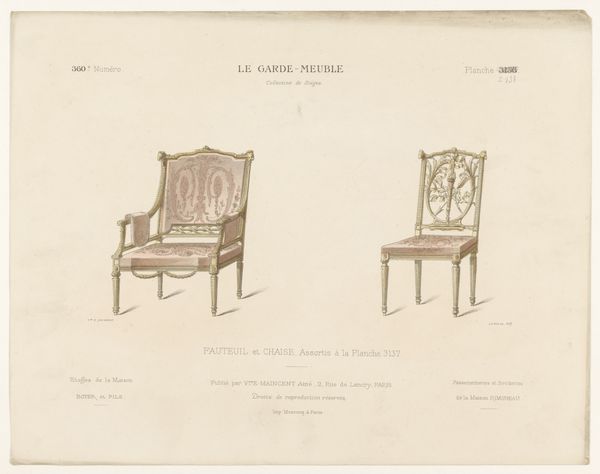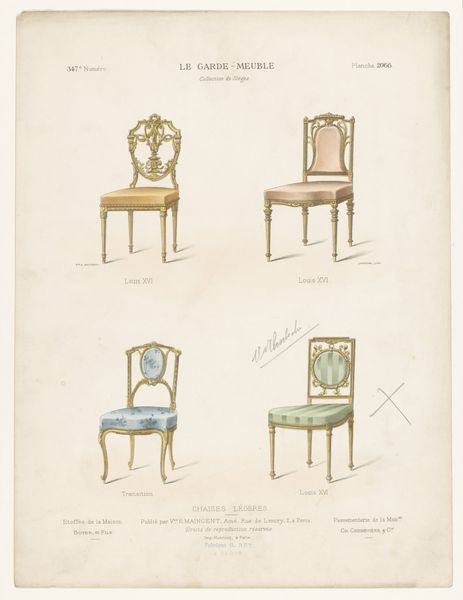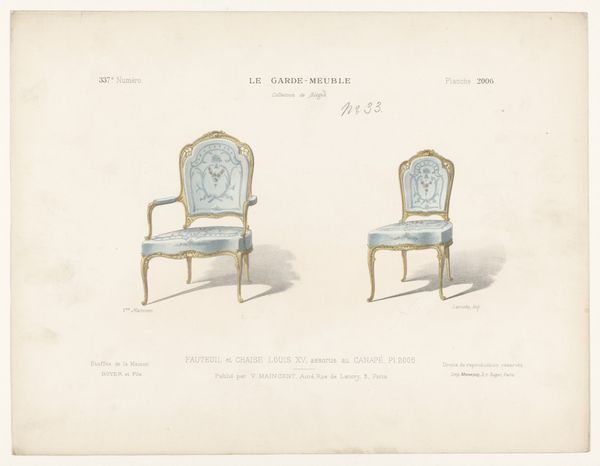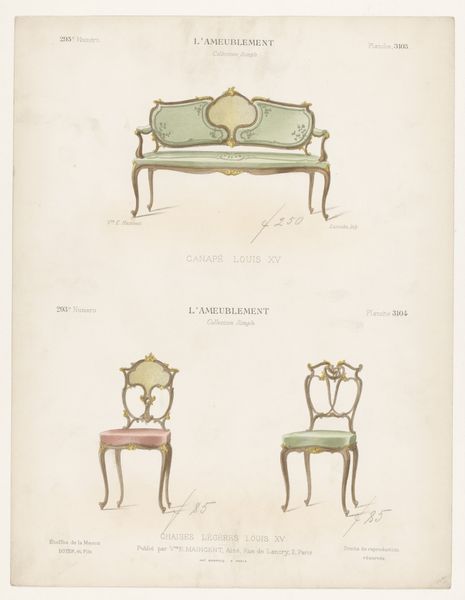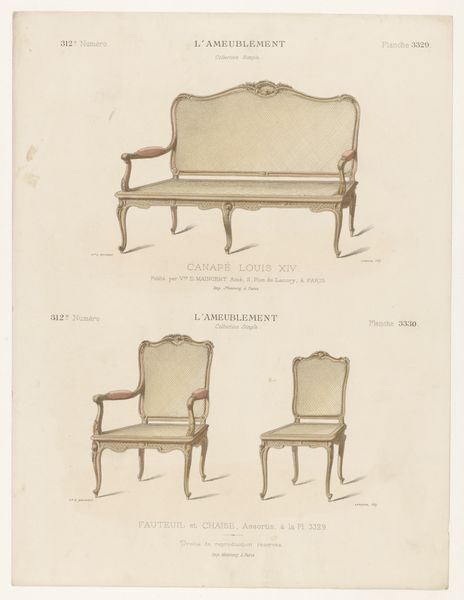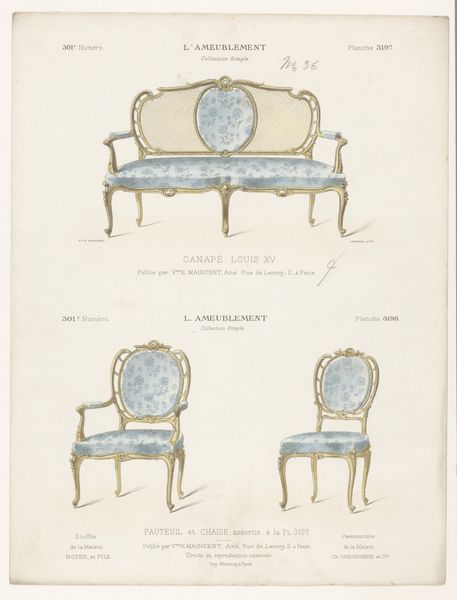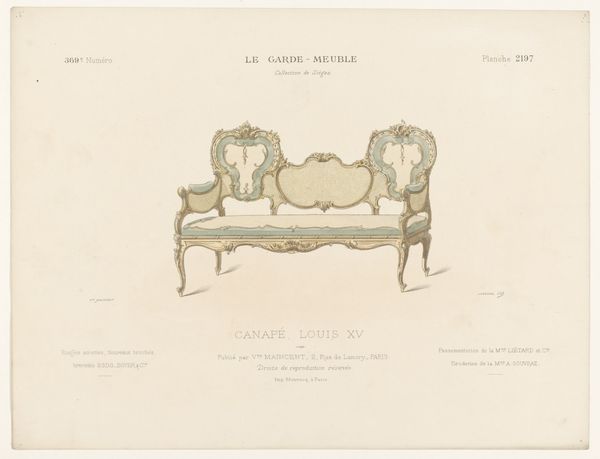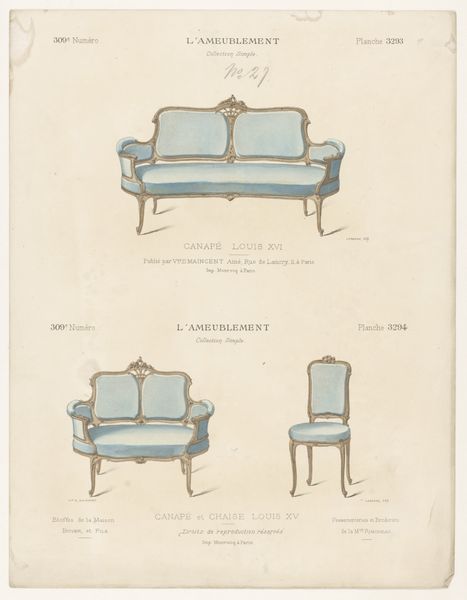
Dimensions: height 276 mm, width 358 mm
Copyright: Rijks Museum: Open Domain
Curator: Right, let's dive in! Before us is "Drie eetkamerstoelen," or "Three Dining Room Chairs," a print made sometime between 1895 and 1935 by the artist Léon Laroche. Editor: My first impression? I'm struck by their ghostly elegance. It's like seeing the specter of luxury, faintly colored and meticulously outlined. Curator: Indeed! What strikes me is how this graphic art piece encapsulates Neoclassical aesthetics but filtered through, say, a decorative lens. It highlights not just functionality, but aspiration. The title at the top, "Le Garde-Meuble" gives it an archival or instructional feel, doesn’t it? Almost like a page from a catalogue. Editor: Absolutely! We see here the aesthetic trappings of power reproduced for potential consumers, feeding into an image of class mobility tied directly to acquiring these specific furnishings. It presents us with not just the object but the cultural and historical implications embedded in its very design. Take for instance the visual hierarchy established simply through chair style and design: each embodies something particular from that epoch. Curator: And note how the print employs line as both boundary and detail. Laroche isn't merely replicating chairs. He’s evoking Louis XV, using line and form to tap into centuries of history and craftsmanship. Editor: I would agree! It almost hints at an instructional drawing and then it turns into almost a decorative dream, promising entry into elite society, by turning the image into just an ideal form removed from tangible realities. You could argue it subtly reinforces existing social structures. Are you "royal" or ready to fake it till you make it? That question, which sounds so current, seems embedded within Laroche's almost playful arrangements. Curator: You know, I feel drawn to its slightly faded, dreamy quality even though this print could indeed function as a tool to categorize, commodify, and therefore, solidify social structures. Maybe that tension between dreamy escapism and pragmatic marketing is the most compelling aspect here. Editor: That duality makes me see it not just as an echo of historical style, but as a subtle commentary on consumerism and the allure of status, then and now.
Comments
No comments
Be the first to comment and join the conversation on the ultimate creative platform.
